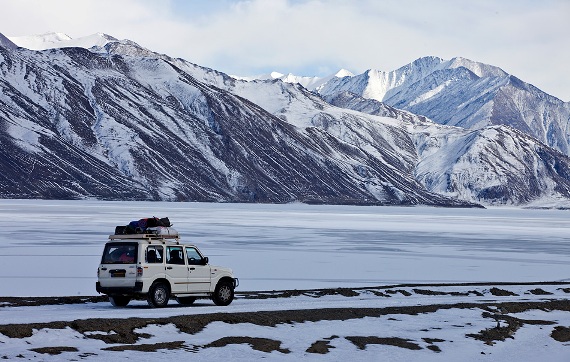[Short Notes] NCERT class VII : Our Environment – Life in the Desserts – Chapter 10 – Part 2
\/
Must Read NCERT class VII : Our Environment – Life in the Desserts – Chapter 10
\/
Deserts are characterised by low rainfall scanty vegetation and extreme temperatures.
Depending on the temperatures there can be hot deserts or cold deserts.
The people inhabit these lands wherever little water is available to practise agriculture.
\/
THE COLD DESERT – LADAKH
Ladakh is a cold desert lying in the Great Himalayas, on the eastern side of Jammu and Kashmir.
The Karakoram Range in the north and the Zanskar mountains in the south enclose it.
Several rivers flow through Ladakh, Indus being the most important among them.
\/

The rivers form deep valleys and gorges. Several glaciers are found in Ladakh, for example the Gangri glacier.
The altitude in Ladakh varies from about 3000m in Kargil to more than 8,000m in the Karakoram.
Due to its high altitude, the climate is extremely cold and dry.
\/
The air at this altitude is so thin that the heat of the sun can be felt intensely.
The day temperatures in summer are just above zero degree and the night temperatures well below 30°C.
It is freezing cold in the winters when the temperatures may remain below 40°C for most of the time.
\/
As it lies in the rain shadow of the Himalayas, there is little rainfall, as low as 10 cm every year.
The area experiences freezing winds and burning hot sunlight.
If you sit in the sun will your feet in the shade, you may suffer from both sunstroke and frost bite at the same time.
\/
Flora and Fauna
Due to high aridity, the vegetation is sparse. There are scanty patches of grasses and shrubs for animals to graze.
Groves of willows and poplars are seen in the valleys.
\/
During the summers, fruit trees such as apples, apricots and walnuts bloom.
Several species of birds are sighted in Ladakh.
Robins, redstarts, Tibetan snowcock, raven and hoopoe are common.
Some of these are migratory birds.
The animals of Ladakh are wild goats, wild sheep, yak and special kinds of dogs.
The animals are reared to provide for the milk, meat and hides.
Yak’s milk is used to make cheese and butter.
The hair of the sheep and goat is used to make woollens.
\/
People
The people here are either Muslims or Buddhists. In fact several Buddhists monasteries dot the Ladakhi landscape with their traditional ‘gompas’.
Some famous monasteries are Hemis, Thiksey, Shey and Lamayuru.
In the summer season the people are busy cultivating barley, potatoes, peas, beans and turnip.
The climate in winter months is so harsh that people keep themselves engaged in festivities and ceremonies.
The women are very hard working. They work not only in the house and fields, but also manage small business and shops.
Leh, the capital of Ladakh is well connected both by road and air.
The National Highway 1A connects Leh to Kashmir Valley through the Zoji la Pass.
\/
Tourism is a major activity with several tourists streaming in from within India and abroad.
Visits to the gompas, treks to see the meadows and glaciers, witnessing ceremonies and festivities are important activities.
Life of people is undergoing change due to modernisation. But the people of Ladakh have over the centuries learned to live in balance and harmony with nature.
Due to scarcity of resources like water and fuel, they are used with reverence and care.
Nothing is discarded or wasted.












